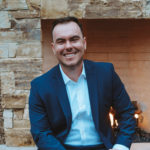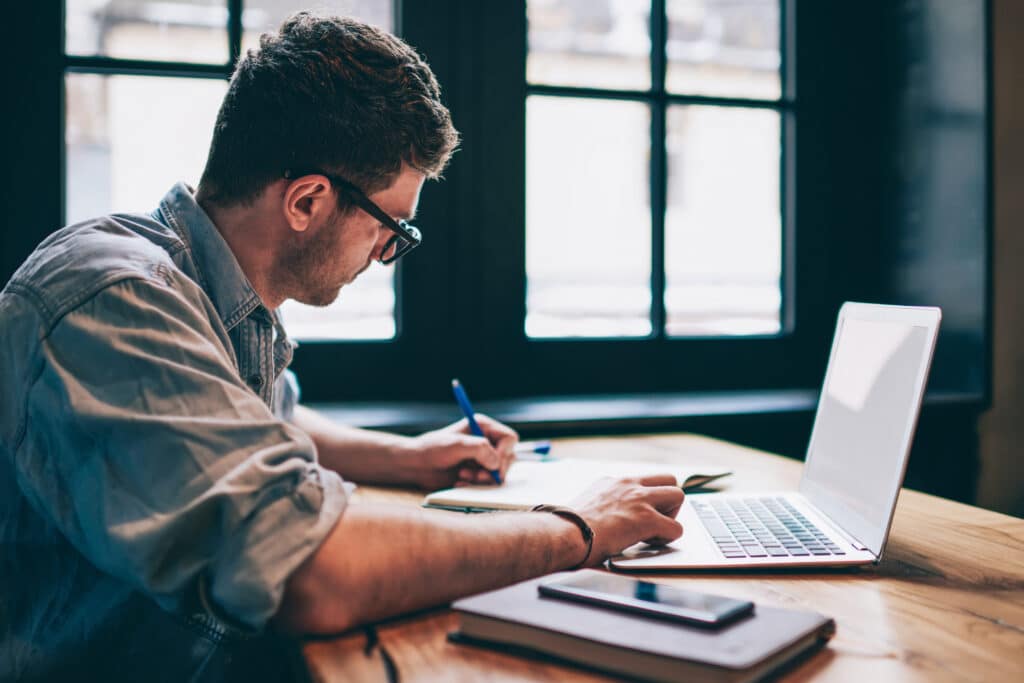Starting and running your own business is an exciting achievement. But along with the freedom and opportunity of entrepreneurship comes one of the more challenging realities: managing your taxes. Many business owners unknowingly overpay, often because the U.S. tax code is complex and business deductions can be difficult to navigate.
The truth is, identifying and properly claiming deductions is one of the most effective ways to reduce your tax burden—yet it’s also one of the most common areas where business owners make costly mistakes. With the right approach, you can avoid overpayment and ensure your hard-earned money stays where it belongs: in your business.
Where to Begin?
Let’s start with the documents themselves. There are four core documents you’ll need when it comes to beginning the tax filing process:
- Form 1099 – A form issued by companies for payments made to contractors of vendors (you’ll receive these from your clients at the end of the year).
- Schedule C – “Profits and Loss from Business”. This is the form where you deduct business expenses from income to determine what you netted as actual profit. This is filed with your 1040.
- Form 1040 – The form used to calculate income tax.
- Schedule SE – The form used to calculate self-employment tax.
As you’d expect, figuring out what you actually earned is essential to accurately calculating taxes and avoiding overpayment. For this, you’ll need your 1099 forms. A 1099 is supplied to you by your clients and indicates the amount of money you received for services or work rendered. Remember, just because a client doesn’t provide a 1099 that doesn’t mean you’re off the hook for reporting that revenue.
From here most business owners say, “Cool, I know what I made now let’s see what I owe” and move onto Form 1040 and Schedule SE. These are the forms used to calculate what you owe the federal government in taxes. The first line of each of these forms asks for your income so most self-employed individuals take the total amount from all their 1099s, plug it in here, and begin their tax calculation.
Unfortunately, this is skipping a crucial step that can end up with you overpaying your business taxes. The common misconception is these forms capture business deductions. In fact, business deductions should be taken out before you start filling out Form 1040 and Schedule SE. So how do you claim these deductions? For that, we need to turn to Schedule C.
Schedule C – Deduct Your Business Expenses!
Schedule C, as the IRS describes, details “Profit and Loss from Business”. Simply put, this form walks you through how to deduct business expenses to determine your Net Earnings (which is just another name for profits). It’s this Net Earnings figure which will carry over to the income section of Form 1040 and Schedule SE and serve as the basis for calculating your taxes owed.
So to kick off Schedule C you’ll need to determine your “Gross Receipts or Sales”. This the amount of money you were paid during the last year for self-employment activities which again, is usually pulled from the 1099s you received from clients or income from the products you sold.
Once you’ve totaled up all the money you brought in this year, it’s time to begin deducting your business expenses. As stated, expenses are basically the costs you incur to provide a service. These could be computer software, office furniture, WiFi bill, home office expense, or materials to create a product to sell. Part II of Schedule C outlines the different expense categories and with the help of Lili, your expenses will be clearly organized in your income and expense report. With that being said, there are some relatively vague expense categories which we wanted to elaborate on: Home Office/Car Expense, Section 179 Expense, and Start-Up Costs.
Home Office & Car Expense
If you use a portion of your home as an office or your personal car for business use, you’re allowed to deduct a portion of these costs on your Schedule C. The IRS offers two methodologies for determining these expenses. The first is calculating the total cost of your home or car then determining which proportion of that expense can be assigned to business versus personal use. As you can imagine, this can get complex quickly, so the IRS offers a simpler method for determining these expenses.
For your home office, a taxpayer is allowed to deduct $5 per square foot of office (capped at 300 sq/ft). It’s important to remember, to qualify for this deduction you must meet the standard for exclusive and principle use meaning there is a dedicated area in your home reserved exclusively for work use (i.e. working at your kitchen table doesn’t count) and your home serves as your principal place of business.
For use of your personal car in a business capacity, a similar expensing method, the actual expense method, can be applied. You can elect to take the total cost of your car (gas, insurance, lease payment, etc.) and figure out how to divvy up this expense between business and personal. Alternatively, you can choose to apply the standard mileage method: deduct 65.5 cents per mile driven for business. It is recommended you keep a mileage log to ensure you’re tracking those miles accurately.
Section 179 – Assets vs. Expenses
Section 179 is an unassuming line on the Schedule C that can result in big savings for self-employed individuals. To really understand Sec. 179, we have to determine the difference between an asset and an expense.
- An asset is an item of value owned by your business (you could sell it) and that helps you produce your goods or service. When you think of assets, think of your larger purchases (computer, office furniture, specialized equipment, etc.).
- Expenses on the other hand are mostly the day-to-day costs of running your business. Think WiFi, phone bill, office supplies, and advertising costs.
You can claim the full amount of deductible expenses on Schedule C but with assets things become a little trickier.
In the simplest terms, unlike your WiFi bill, equipment like a computer or desk has an actual value that will slowly decrease as you use it over time. Therefore, instead of deducting the full amount you paid in the year you bought the item, you’re supposed to deduct the cost over multiple years as an expense called depreciation. For example, if I buy a sewing machine for my business that costs $5,000 that I expect to use for 5 years, I can deduct $1,000 a year on Schedule C as depreciation expense.
Right now, you’re probably thinking to yourself “Great, I just dropped two grand on a new Macbook and I can only deduct a portion of it this year”. Not so fast. This is where Sec.179 comes into play as it allows you to claim the full cost of a business asset in the year of purchase instead of over multiple years. The IRS sets the limit on Sec. 179 deductions at $1M so you have a lot of room to work with when it comes to deducting these major business purchases.
Startup Costs up to $5,000
When it comes to getting a business up and running, many business owners will find themselves running up quite a tab before they even land their first customer. This is normal and the IRS provides some guidance here that will allow you to deduct some of these startup costs.
So what constitutes a startup cost? A startup cost is a one-time cost incurred in the establishment of your business. Common examples would be:
- Travel costs to meet with potential suppliers, distributors, or customers.
- Consultant, legal, or accounting fees associated with starting your business
- Additional advertising for the opening of your business
- Any sort of money spent on market analysis
It’s important to be clear on what does not constitute startup costs. For one, ‘Research and Development’ costs cannot be deducted as a startup expense. So unfortunately, if you’re in the process of developing a new software or the cure for male pattern baldness, those costs cannot be deducted. Costs related to physical goods cannot be deducted either. Therefore, if you bought a new coffee machine, printer, or specialized piece of machinery, you cannot claim these as a startup cost (but you can potentially deduct them as a Sec. 179 Expense).
You can deduct up to $5,000, as long as you don’t spend more than $50,000 in total startup costs.
Lastly, if you’re setting your new business up as a partnership, LLC, or corporation, the IRS will let you deduct an additional $5,000 related to the organization and registering of your business. This could include legal fees for drafting partnership agreements, filing fees for registering with the state, and accounting fees for establishing the organization. But again, this is strictly limited to the aforementioned business types so unless you plan on registering with your home state using one of these organizational structures, you won’t be able to capitalize on this additional deduction.
Calculating Your Net Earnings
Now that we’ve expounded on some of the more opaque aspects of determining your business expenses, let’s run through a quick example on how to calculate your Net Earnings. As we’re going through this, remember the basic formula Schedule C is outlining:
Gross Income – Business Deductions = Net Earnings
Let’s say you just completed your first year of business and it was an absolute success! You signed 5 major clients and performed $12,000 worth of services for each. You also made the following purchases during the year:
- Business Cards: $500
- Advertising in a local newspaper: $1,000
- New Laptop: $1500
- Software: $400
- You converted your 400 sq ft guest room to a home office
- Drove a total of 550 miles to client meeting
- Office Furniture: $1500
- Start with your gross income. Considering you had 5 clients paying you $12,000 each, this means your revenue for the year was $60,000.
- Next, let’s look at what we can deduct as business expenses. The business cards, advertising cost, and software are all business expenses that can be deducted in full. So far, we have $1,900 in deductible expenses ($500 + $1,000 + $400).
- Let’s address the laptop and office furniture. Both are considered assets. According to the IRS this expense needs to be recognized over the life of the object. But you’re new to the world of self-employment and need as much money in your pocket as possible. So instead, we’re going to claim a Section 179 Deduction. This will allow you to deduct the entire cost of these items in the current year. This increases our deductible expenses by $3,000 ($1500 furniture + $1500 laptop).
- Car – Considering you drove 550 miles and the current deduction rate is 57.5 cents per mile, this means you’ll be able to deduct $316 as an auto expense.
- Home – Now we’ll look at the amount of home office expenses you can deduct. Here we’ll take the simplified route as well. Currently, the deduction rate for a home office is $5 per square foot. Unfortunately, this is capped at 300 square feet so despite having a 400 sq. ft. office, you’ll only be able to deduct $1,500 (300 x $5).
Now that we’ve determined our revenue and expenses, we can determine our Net Earnings:
| Gross Income | $60,000 |
| Deductible Expenses | |
| Business Cards | $500 |
| Advertising costs | $1,000 |
| Software | $400 |
| Laptop + Office Furniture (Sec. 179 Deduction) | $3,000 |
| Home Office Deduction | $1,500 |
| Auto Deduction | $316 |
| Total | $6,716 |
| Net Earnings / Profit | $53,284 |
So, Now What?
Congratulations! You’ve persevered through Schedule C, figured out your business deductions, and determined your Net Earnings. So now what do you do? Well now it’s time to actually calculate what you owe and for that, you’ll need your Form 1040 and Schedule SE, where you’ll be able to deduct your personal expenses.
Remember as you’re filling out your 1040 and Schedule SE, the most common reason for business tax overpayment is a failure to claim eligible business expense deductions. But now you know how to avoid this: by claiming your business deductions via Schedule C. And once you’ve calculated your Net Earnings on Schedule C, this is the amount you’ll input as “Income” at the very beginnings of Form 1040 (see Line 1) and Schedule SE (see Line 2). So by accurately filling out the Schedule C form and including it when filing your business taxes, you’ll have considerably reduced the amount of money you’ll actually end up owing during tax season.





